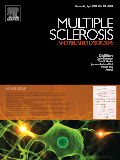“Stroke is one of the leading causes of disability and death in the world.
The endocannabinoid (eCB) system is upregulated in several neurological diseases including stroke. A previous animal study demonstrated an increased expression of the endocannabinoid receptor 1 (CB1R) in the penumbra area surrounding the ischemic core, suggesting a crucial role in inflammation/reperfusion after stroke. Regarding the localization of CB1/CB2 receptors, animal studies showed that cortical neurons, activated microglia, and astroglia are involved. Our aim was to evaluate the cerebral expression of CB1R in the ischemic brain areas of 9 patients who died due to acute cerebral infarction in the middle cerebral artery territory.
METHODS:
The cerebral autoptic tissue was collected within 48 hours since death. Ischemic and contralateral normal-appearing areas were identified. After tissue preprocessing, 4-µm-thick cerebral sections were incubated with the primary CB1R antibodies (Cayman Chemical Company, Ann Arbor, MI). Thereafter, all cerebral sections were hematoxylin treated. In each section, the total cell number and CB1R-positive cells were counted and the CB1R-positive cell count ratio was calculated. For statistical analysis, Student’s t-test was used.
RESULTS:
In normal tissue, CB1R-positive neurons were the majority; a few non-neuronal cells expressed CB1R. In the ischemic areas, a few neurons were detectable. A significant increase in total CB1R staining was found in the ischemic regions compared to contralateral areas.
CONCLUSIONS:
We found an increase in CB1R expression in the ischemic region (neuronal and non-neuronal cell staining), suggesting the inflammatory reaction to the ischemic insult. Whether such response might mediate neuroprotective actions or excitotoxicity-related detrimental effects is still unclear.”
http://www.ncbi.nlm.nih.gov/pubmed/27425766








